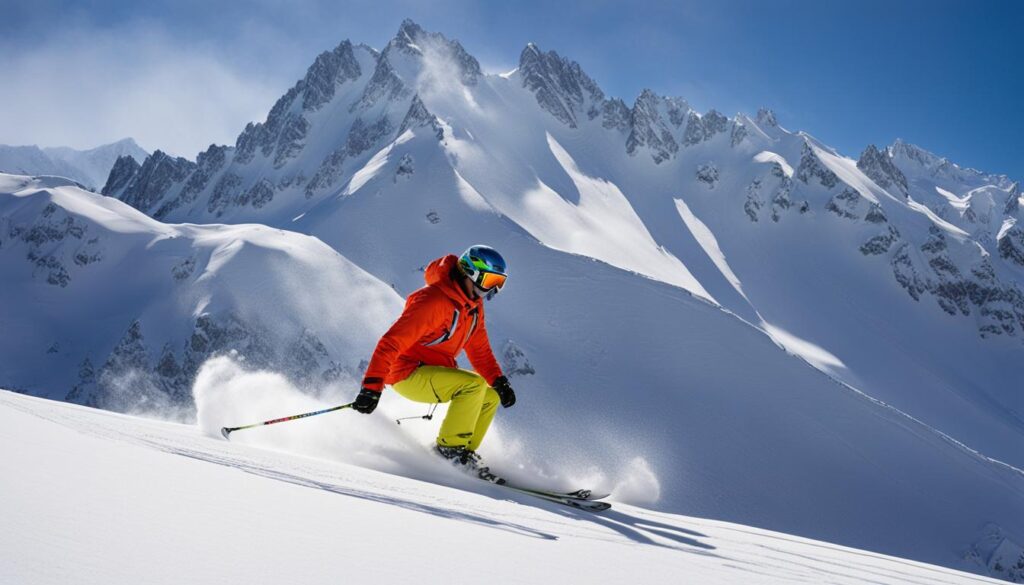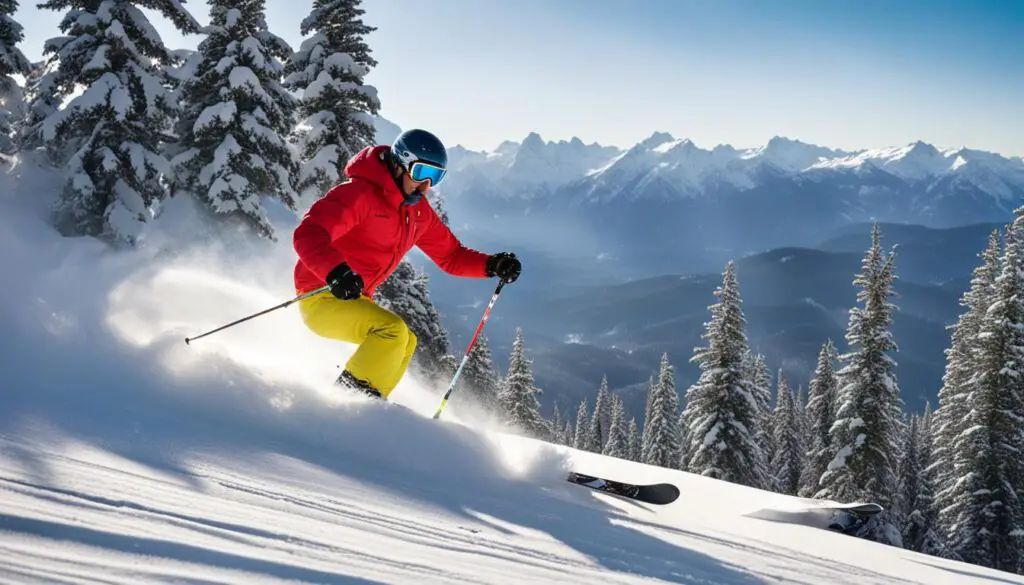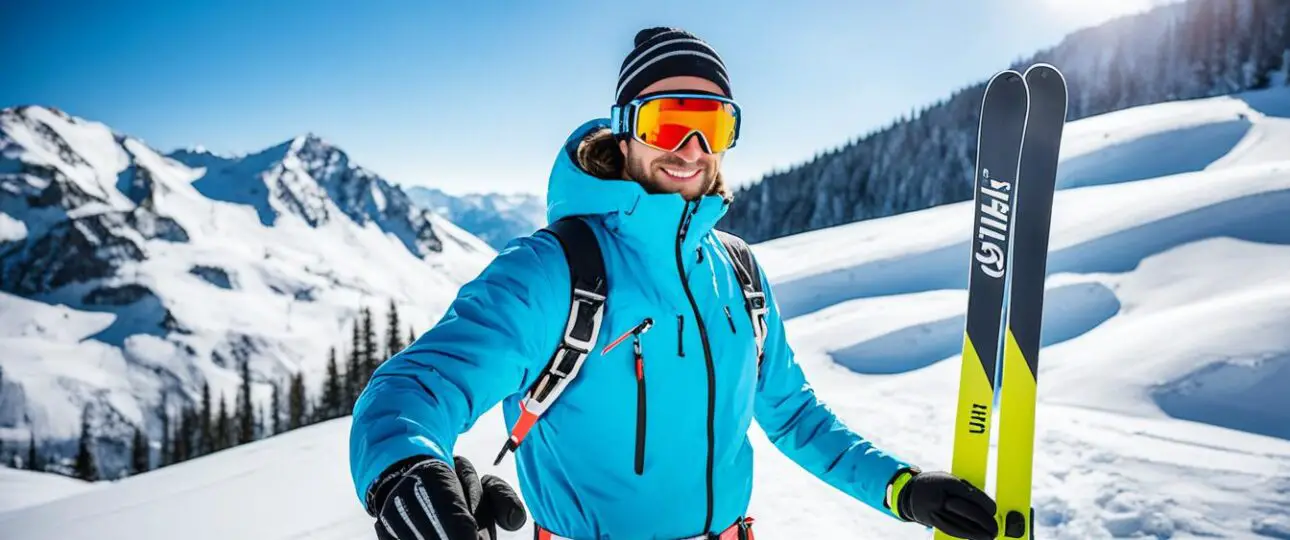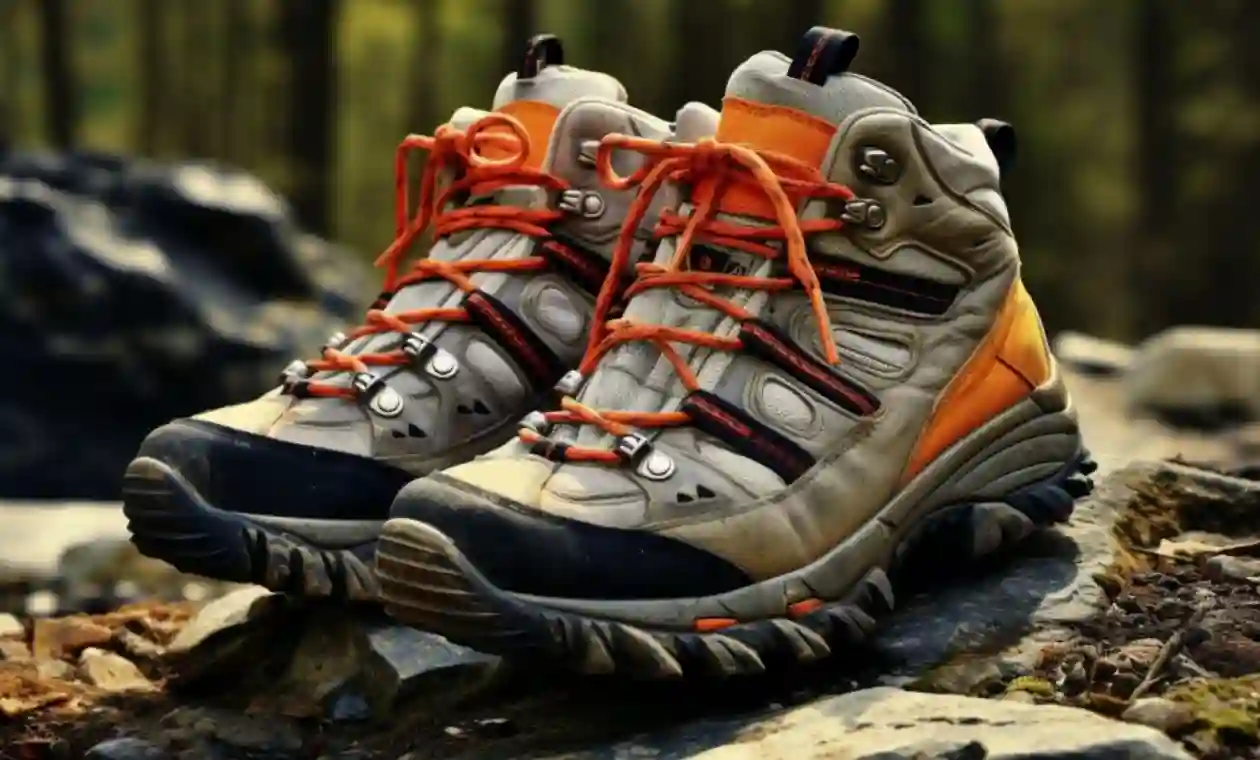Picture this: It’s a crisp winter morning, and you’re standing at the top of a pristine ski slope, ready to tackle the mountain. As you take in the breathtaking scenery, you can’t help but feel a surge of excitement. But before you hit the slopes, there’s an important decision to make: choosing the right ski length.
Getting the perfect ski length is essential for a great skiing experience. It affects your performance, control, and overall enjoyment on the mountain. But how do you determine the ideal ski length for your unique needs?
Key Takeaways:
- Choosing the right ski length is crucial for optimal performance on the slopes.
- Ski length is determined by factors such as height, weight, skiing ability, and personal preference.
- A general rule of thumb is to select skis that are between your chin and the top of your head.
- Consider other factors like ski category, snow type, and terrain preference when choosing ski length.
- Beginners may prefer shorter skis for easier turn initiation, while advanced skiers may opt for longer skis for stability at high speeds.
Factors to Consider When Choosing Ski Length
When it comes to selecting the right ski length, there are several important factors to consider. These include your height, weight, skiing ability, and style. While a ski length chart can provide a starting point, it’s important to remember that it’s not a one-size-fits-all solution. Personal preference and the type of terrain you’ll be skiing on also play a significant role in finding the perfect ski size.
Some skiers may prefer shorter skis for easier turn initiation and increased stability, especially if they’re beginners or enjoy skiing on narrow trails. On the other hand, longer skis are favored by skiers looking for enhanced stability at high speeds or when skiing in deep snow.
Choosing the Right Ski Size
When using a ski length chart, keep in mind that it provides suggested ski lengths based on skier height. Here’s an example of a ski length chart:
| Skier Height (ft) | Suggested Ski Length (cm) |
|---|---|
| 4’10” – 5’2″ | 140 – 150 |
| 5’3″ – 5’6″ | 150 – 160 |
| 5’7″ – 5’10” | 160 – 170 |
| 5’11” – 6’2″ | 170 – 180 |
| 6’3″ and taller | 180+ |
While these numbers can be helpful, it’s essential to consider your skiing ability and style. If you’re predominantly skiing on groomed slopes and prefer shorter turns, you might opt for skis on the shorter end of the suggested range. Conversely, if you’re an experienced skier who enjoys skiing at high speeds or in powder, you may lean towards the longer side.
For a more accurate ski size recommendation, consider using a ski length calculator. These calculators take into account multiple factors, such as weight, skiing ability, and terrain preference, to provide personalized suggestions. By inputting your specific measurements, you can refine your search and find the ideal ski length for your needs.
Remember, choosing the right ski length is crucial for optimizing your performance and enjoyment on the slopes. Take into account your height, weight, skiing ability, and style, and consider using a ski length chart or calculator as a starting point. Ultimately, the perfect ski length is a balance between industry recommendations and your personal preferences.
Ski Sizing by Ability Level
When it comes to choosing the right ski length, your ability level is an important factor to consider. Ski technology has made it possible for beginners to ski a wider range of skis, but there are still key features that differentiate skis for different ability levels. Let’s take a closer look at ski sizing for beginners, intermediate skiers, and advanced skiers.
Ski Size for Beginners
For beginners, it’s generally recommended to choose skis that are on the shorter side. Shorter skis offer easier maneuverability and control, which is important when you’re just starting out. They also allow beginners to initiate turns more easily. In terms of dimensions, beginner skis typically have a softer flex, narrower widths, and forgiving constructions to aid in learning and smooth turning.
Ski Size for Intermediate Skiers
Intermediate skiers have progressed beyond the beginner stage and are more comfortable on the slopes. As an intermediate skier, you can start exploring longer skis that provide increased stability and performance. These skis are typically wider and have a stronger wood core and more advanced construction to handle a variety of terrain and conditions.
Ski Size for Advanced Skiers
Advanced skiers have mastered the fundamentals and have developed their skills to a higher level. For advanced skiers, longer skis are often preferred for enhanced stability and control at higher speeds. These skis are designed to handle aggressive skiing and may feature advanced technology such as Titanal layers and specialized rocker configurations.

Remember, these are general guidelines for ski sizing by ability level. However, it’s important to also consider factors such as your height, weight, and personal preference when choosing the right ski length.
| Ability Level | Recommended Ski Length |
|---|---|
| Beginner | Shorter skis for easier control and maneuverability |
| Intermediate | Slightly longer skis for increased stability and performance |
| Advanced | Longer skis for enhanced stability and control at high speeds |
By selecting the appropriate ski size based on your ability level, you can optimize your skiing experience and enjoy the slopes to the fullest.
Ski Style, Dimensions, and Feel
When choosing the right ski length, it’s crucial to consider the dimensions and feel of the skis. Three important factors to keep in mind are ski waist width, ski turning radius, and ski rocker type.
Ski Waist Width
The ski waist width refers to the measurement at the narrowest point of the ski. It plays a significant role in the ski’s performance and turning capability across different snow conditions. Skis with narrower waist widths offer quicker edge-to-edge transitions, making them ideal for carving turns on groomed runs. On the other hand, skis with wider waist widths provide better flotation in powder and stability in variable snow conditions.
Ski Turning Radius
The ski turning radius is determined by the width of the ski’s tip, waist, and tail. It directly affects the ski’s ability to make quick turns or maintain stability at high speeds. Skis with a shorter turning radius are easier to maneuver and are great for making quick, tight turns. They excel in slalom and mogul skiing. Skis with a longer turning radius provide better stability at higher speeds and are suitable for longer turns and wide-open spaces. They are commonly used in giant slalom and free-skiing disciplines.
Ski Rocker Type
The ski rocker type refers to the shape of the ski’s profile. There are typically three types of rocker profiles: camber, rocker, and a combination of both (rocker-camber-rocker). A camber profile means the ski has a slight upward arch in the middle, with the tip and tail touching the ground when the ski is unweighted. This profile offers excellent edge grip on hard-packed snow and improved stability at speed. A rocker profile, also known as reverse camber, has a downward arch in the middle, with the tip and tail lifted off the ground. This profile enhances maneuverability, floatation in powder, and easy turn initiation. A rocker-camber-rocker profile combines elements of both, offering a versatile ride suitable for various snow conditions.
Understanding the ski style, dimensions, and feel can help you make an informed decision when choosing the right ski length. It’s essential to consider your skiing preferences, the type of terrain you’ll be skiing on, and the snow conditions you typically encounter. Now, let’s take a closer look at these factors in the following table:
| Ski Dimension | Ski Waist Width | Ski Turning Radius | Ski Rocker Type |
|---|---|---|---|
| All-Mountain Skis | Around 80-100mm | Medium to long turning radius | Camber or rocker-camber-rocker |
| Carving Skis | Narrow, around 65-80mm | Short to medium turning radius | Camber for precise control |
| Powder Skis | Wide, above 100mm | Variable, depending on ski length | Rocker or rocker-camber-rocker for floatation |
As you can see in the table above, different ski categories have specific dimensions that cater to specific skiing styles and terrain types. Understanding these dimensions can guide you in choosing the right ski length that aligns with your skiing preferences and enhances your on-mountain experience.
When to Size Up or Size Down Your Skis
Choosing the right ski size is essential for maximizing your skiing experience. While it’s important to follow recommended ski size ranges, there are instances where sizing up or sizing down your skis may be beneficial. Here are some factors to consider when deciding whether to size your skis shorter or longer:
- Sizing Skis Shorter:
- Skis that are sized shorter can make turning easier, especially for beginner or intermediate skiers.
- Carving skis with only camber and skinnier waists can be skied shorter, allowing for quicker edge-to-edge transitions.
- This option is suitable for skiers who prioritize maneuverability over stability at high speeds.
-

- Sizing skis longer can provide more stability, particularly for aggressive skiing or off-trail adventures.
- Skiers who weigh more or ski at higher speeds may benefit from longer skis.
- Skis with a lot of rocker can be skied slightly longer to maintain stability.
- This option is ideal for those who prioritize stability over maneuverability.
When deciding whether to size up or size down your skis, consider your skiing style, weight, and terrain preference. Keep in mind that it’s essential to find the right balance between control and stability to optimize your skiing performance.
Conclusion
Choosing the right ski length is essential for maximizing your performance and enjoyment on the slopes. While height and ski length charts provide a good starting point, it’s crucial to consider other factors such as skiing ability, style, and personal preference.
Beginner skiers often find shorter skis more manageable, allowing for easier turn initiation and control. On the other hand, advanced skiers may prefer longer skis for added stability at higher speeds.
It’s important to remember that ski dimensions, including waist width, turning radius, and rocker type, also play a significant role in a ski’s performance and feel. Narrower waist widths provide quicker edge-to-edge transitions, while wider waist widths offer better flotation in powder. Turning radius affects a ski’s agility and stability, while rocker type influences its performance in different snow conditions and terrains.
By considering all these factors, you can find the best ski length for your needs and enhance your skiing experience. Whether you’re a beginner or an expert, taking the time to choose the right ski length will ensure that you have the most enjoyable and memorable skiing adventures. Remember to consult ski sizing tips and the ski length guide as a starting point, but let your skiing ability, style, and personal preference guide you to the perfect fit.



